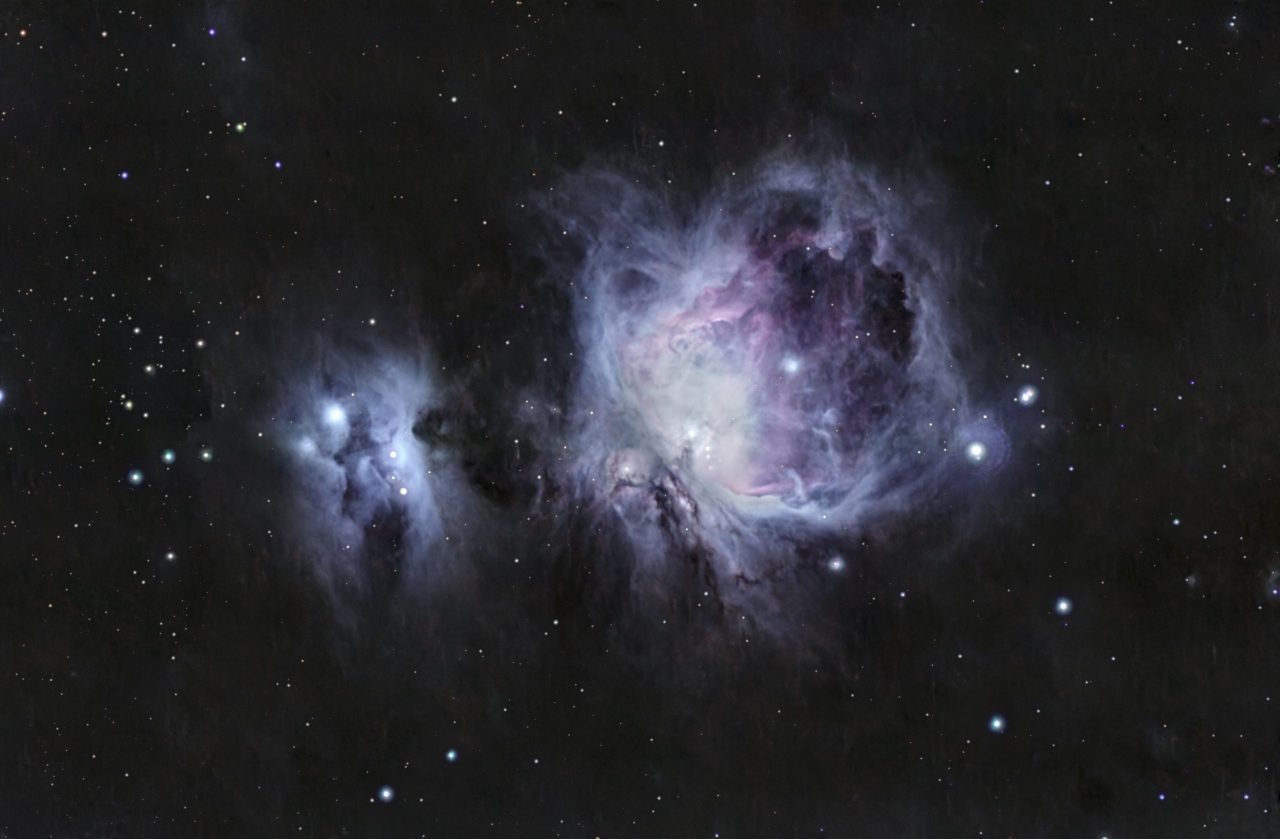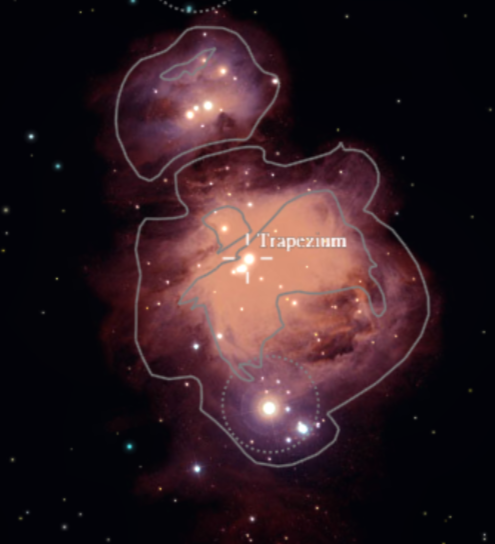The Great Orion Nebula
01/28/25
Messier 42 – The Great Orion Nebula: A Stellar Nursery in the Sword of Orion
The Great Orion Nebula, cataloged as Messier 42 (M42), is one of the brightest and most iconic deep-sky objects in the night sky. Located in the Sword of Orion, hanging just below Orion’s Belt, it is a vast emission and reflection nebula that serves as a stellar nursery, where thousands of new stars are being born. Easily visible to the naked eye as a hazy patch of light, the Orion Nebula offers a rare, close-up view of the violent and beautiful process of star formation.
Distance and Size
- Distance: ~1,344 light-years
- Apparent Size: ~65 x 60 arcminutes (a little larger than the full Moon)
- Actual Size: ~24 light-years across
Because it is so large and close to Earth, M42 is a cornerstone for understanding stellar birth, serving as a kind of “cosmic laboratory” for astronomers studying how stars and planetary systems form.
Structure and Components
The Orion Nebula is part of the Orion Molecular Cloud Complex, a massive star-forming region that spans hundreds of light-years and includes other famous objects like Barnard’s Loop, Horsehead Nebula, and Messier 43.
Key features of M42 include:
- Emission Nebula: Ionized hydrogen gas (H II) glows a deep red from the radiation of hot, young stars.
- Reflection Nebula: Cooler dust and gas scatter blue and violet light from nearby stars.
- Dark Nebulae: Intricate filaments and pillars of dust obscure portions of the nebula and are silhouetted against the glowing gas.
- Protoplanetary Disks (Proplyds): Telescope and space telescope imaging reveal young stars surrounded by disks of gas and dust—potential early planetary systems in the making.
The Trapezium Cluster – M42’s Engine Room
At the heart of the Orion Nebula is the Trapezium Cluster, a tight group of four main stars (and dozens of fainter companions) that illuminates the surrounding gas. Refer to the small map image for the location. In the main image is shows up as a small blob as these stars are too close for the telescope I use to resolve.
- Main Ionizing Star: Theta¹ Orionis C, a hot O6 star
- Surface Temperature: ~39,000 K
- Luminosity: ~210,000 times that of the Sun
- The Trapezium stars are young—only about 1 million years old—and their intense ultraviolet radiation and stellar winds sculpt the surrounding nebula, triggering more star formation and clearing away surrounding gas. The Trapezium’s radiation creates a large ionized bubble within the nebula and drives the visible shock fronts, arcs, and bow waves seen in detailed images.




